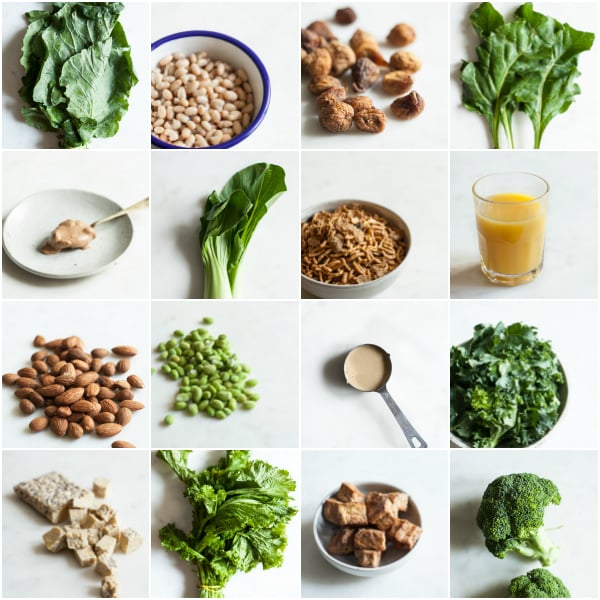
Happy Tuesday, friends! As always, I enjoyed reading your insights into the weekend reading links.
Last summer, I published a post called 15 Simple, Affordable, and Protein Rich Combinations of Plant Foods. The goal was to break down protein requirements and recommendations using real food examples. Many of us have read about the recommended daily allowances for major nutrients, but it can be tough to translate that information into real life advice that matches our daily eating patterns.
Today, as a follow up, I want to offer you 15 simple, affordable, and calcium rich vegan food combinations—and in the future, I’d love to continue the series with other nutrients as well.
Calcium is one of the more important nutrients for vegans to have on their radars, for reasons I’ll expand on in a moment. Most vegans have a general sense of what the best plant-based sources of calcium are (leafy greens and crucifers), but even so, it can helpful to parse through some of the details.
Why Bone Health Matters to Me
I was in my early twenties, recovering from my last anorexia relapse, when a bone scan indicated that I had osteopenia, or low bone density. Mine was so low, in fact, that the diagnosis had nearly been one of osteoporosis. My endocrinologist explained that, under an x-ray, that my bones looked like those of a woman at least twice my age.
There’s a moment like this, I think, in the life cycle of any eating disorder. It’s the moment when you realize that the experience hasn’t merely been a set of abstract rules or an elaborate game you were playing with yourself. There had been many telltale health warning signs along the way—seeing stars when I stood up too quickly, the absent periods, the constant cold. But this was my wakeup call.
Luckily for me, the body forgives. It can be a challenge to compensate for bone density that was lost in the teens and twenties, since these are the formative decades for bone building. Significant losses in these years can put a person at higher risk for osteopenia or osteoporosis later in life. Still, one can work to build or maintain bone strength at any point in the life cycle, and I’ve spent the decade since my osteopenia diagnosis paying close attention to calcium in my diet and bone health overall. It’s something I become more and more vigilant about as I get older, since I know that preserving bone density is an important part of healthy aging.
Women and Bone Health
While I have special reason to be vigilant about my bones because of personal history, bone health is a topic of concern for all women at every stage of the life cycle. Both men and women develop osteopenia and osteoporosis, but hormonal flux, longer life span, lower average calcium intakes, and having lower bone bone mass in the first place make women more susceptible.
As I said, the teens and twenties are the most critical years for forming strong bones (which is why eating disorders in young adults can have such serious consequences). About 40% of bone mass is built during adolescence, and by the late twenties and early thirties, peak bone mass is achieved [1]. Bone losses begin in the mid or late thirties and continue in the forties and fifties; for women, changes in estrogen levels after menopause can cause sharp declines, since estrogen helps to regulate bone turnover [2, 3]. A woman can work to maintain her bone density throughout the years by paying attention to calcium and vitamin D intake, staying active, eating a balanced diet that includes plenty of fruits and vegetables, avoiding smoking, and limiting alcohol [4].
Bone Building Nutrients and Vegan Diets
Calcium, along with Vitamin D, is the major nutrient associated with strong bone health. Vegan diets deliver calcium through dark leafy greens, cruciferous vegetables, some legumes, and fortified foods. A well planned, nutritionally adequate, and varied vegan diet will meet a person’s calcium needs, and in fact, we absorb the calcium in greens better than we do the calcium in cow’s milk [5].
Still, it’s important for vegans to get clear and evidence-based information about calcium and how best to source it within a plant-based diet. Some research has suggested that vegans are at a higher risk of bone fracture than non-vegans [6, 7]. A close look at the studies, though, suggests that the higher fracture risk probably wasn’t due to veganism, per se (i.e., the absence of animal foods), but rather the fact that the individuals studied weren’t getting enough calcium their diets overall.
In other words, vegans don’t have to be at greater risk for bone thinning or fractures. But they may, for various reasons, skimp on calcium in their diets, which will make them as susceptible to low bone density as anyone consuming a low calcium diet would be. Vegan diets aren’t associated with a higher fracture risk if the amount of calcium consumed is adequate. [8]
Why Some Vegans Might Not Get Enough Calcium
Why would vegans get less calcium than omnivores? One factor might be the circulation of certain misconceptions about calcium and bone health within the vegan community. The most notable of these is the idea that vegans have special protection against bone loss because our diets are more alkaline than standard American diets. Some older studies suggested that more acid-forming diets could lead to bone resorption (loss of calcium from the bone matrix), but the latest research doesn’t draw the same conclusions. Instead, it suggests that the relative acidity or alkalinity of one’s diet has an insignificant impact on bone health [9]. Eating an alkaline diet is no guarantee of bone protection.
Meanwhile, many vegans believe that protein is acid-forming, and therefore bad for bone health, when in fact the opposite is true: protein seems to have a protective effect on the bone matrix [10, 11, 12, 13]. Ensuring adequate protein in the diet is an important part of eating for strong and healthy bones.
In my work, I see that some vegans don’t have a clear sense of what the best vegan sources of calcium are. For example, many new clients assure me that they’re getting enough calcium because they’re eating a lot of salad and baby spinach. But salad greens and spinach actually aren’t very good calcium sources, and spinach in particular is high in oxalates, which can block the absorption of calcium in food.
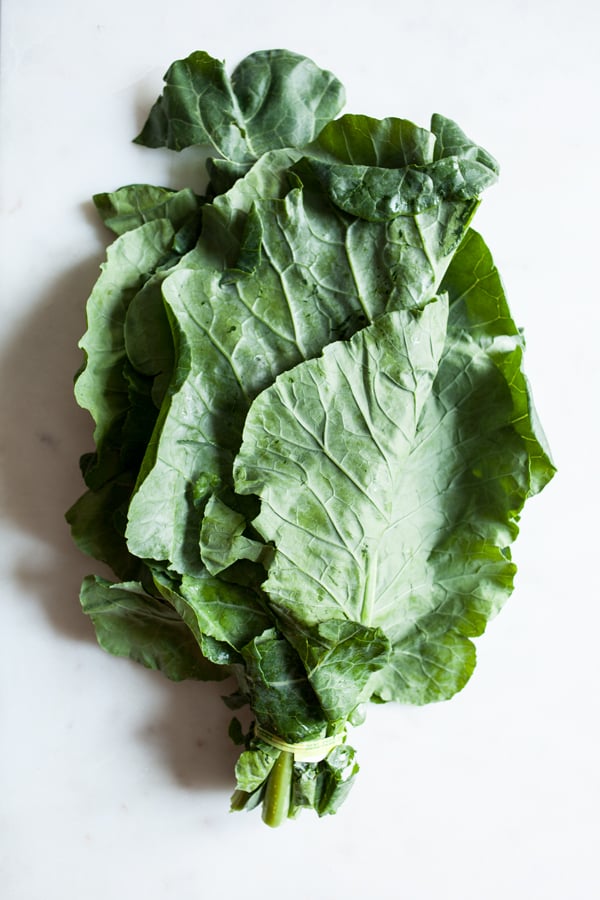
The leafy greens that deliver the most calcium include collards, mustard and turnip greens, kale, and bok choy. These greens might sneak into salads, but they often don’t. In order to maximize calcium intake, it’s important for plant based eaters to get a wide array of leafy greens and crucifers in their diets.
Some vegans also seem to be a little squeamish about the idea of eating fortified foods, like fortified non-dairy milk, orange juice, tofu, or cereal. One reason might be that we spend so much time defending our diets against uninformed criticism that we don’t like the idea of having to rely on nutrient sources that aren’t a “natural” part of the plant kingdom.
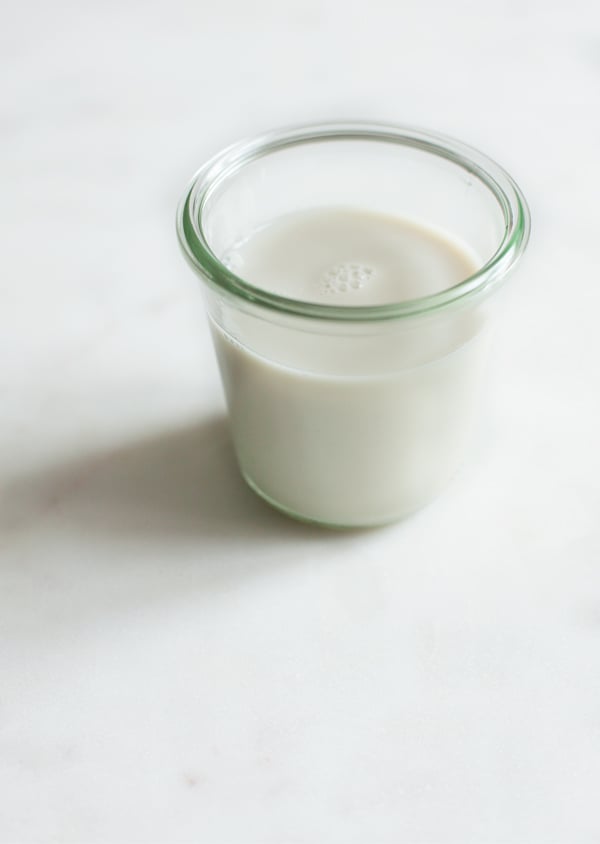
But vegans shouldn’t feel any special pressure to avoid fortified food. Fortification plays an important role in many peoples’ diets—vegans and omnivores alike. Most people get Vitamin D through fortification; cow’s milk is fortified with it, just the way plant milk is. Most whole grain products and cereal foods are fortified with folate, which helps to protect against neural tube defects.
Fortified foods exist in order to offer us a little extra insurance when it comes to healthful eating. We don’t need them in order to be healthy, but there’s no reason to avoid them if they’ll help to make nutrient acquisition easier. (This is especially true for parents who are feeding picky eaters.) One or two servings of fortified foods daily can go a very long way in helping a person to meet his or her calcium needs, and these foods also typically include Vitamin D.
Speaking of that, Vitamin D goes hand-in-hand with calcium in helping to maintain bone mass. Recently, I wrote a blog post inspired by the story of a client who hadn’t had Vitamin D on her radar, and found out about its importance the hard way—by learning she was deficient. This is a really common scenario nowadays, and not only among vegans. Vitamin D is activated by sunlight exposure, which many of us lack due to lifestyle or climate. Vitamin D supplementation may be necessary for folks who can’t ensure adequate sunlight or who have lot absorption of the vitamin. But fortified foods can definitely serve as one source of Vitamin D in the diet.
How to Get Enough Calcium in a Vegan Diet
So, what’s the best way for vegans to ensure that their diets are working in favor of good bone health?
First, it’s good to be aware of the recommended daily allowance. The latest recommendation is 1,000 milligrams of calcium daily for women aged 19-50 and 1,200 milligrams daily for women over 50. The RDA for growing kids and teens (ages 9-18) is 1,300 milligrams daily. [14] This recommendation is offered under the assumption that we’ll absorb about 30% of the calcium we consume in food (about 300 milligrams daily).
That’s how much calcium you should be aiming for in your diet. But what’s the best way to source it? Whenever I share a recommended dietary allowance with a client, I’m sure to explain the recommendation through food, because the numbers in and of themselves can feel a little empty.
Best Vegan Sources of Calcium
Let’s start by looking at the best plant-based calcium sources. I’m listing them in descending order of calcium density, and I’m giving both the milligrams calcium per serving, and also how far each food takes you toward 100% of your RDA. Keep in mind that some estimates vary for these foods (especially for different brands of calcium fortified foods), so the actual calcium content might be a little higher or lower.
1. Fortified almond, soy, or rice milk, 8 ounces: 300-500mg (30-50%)
2. Fortified orange juice, 8 ounces: 350 mg (35%)
3. Collard greens, cooked, 1 cup: 270 mg (27%)
4. Fortified breakfast cereal, 1 cup dry: 250-1000 mg (25-100%)
5. Turnip greens, steamed or boiled, 1 cup: 200 mg (20%)
6. Mustard greens, steamed or boiled, 1 cup: 160 mg (16%)
7. Bok choy, steamed or boiled, 1 cup: 150 mg (15%)
8. Tempeh, 4 ounces: 120 mg (12%)
9. Tahini, 2 tablespoons: 120 mg (12%)
10. Dried figs, 1/2 cup: 120 mg (12%)
11. Extra Firm Tofu, 3 ounces: 100 mg – 150 mg (10-15%)
12. Oats, instant, 1 serving: 100 mg (10%)
13. Kale, steamed or boiled, 1 cup: 100 mg (10%)
14. Shelled edamame, steamed, 1 cup: 100 mg (10%)
15. Silken tofu, 3 ounces: 80 mg (8%)
16. Blackstrap molasses, 1 tablespoon: 80 mg (8%)
17. Almond butter, 2 tablespoons: 80 mg (8%)
18. Almonds, 1 ounce: 80 mg (8%)
19. Orange, 1 cup sections: 70 mg (7%)
20. Navy beans, cooked, ½ cup: 65 mg (6.5%)
21. Broccoli, steamed or boiled, 1 cup: 60 mg (6%)
22. Pinto beans, cooked, ½ cup: 50 mg (5%)
What about calcium supplements? For certain individuals, a low dose supplement might be necessary or helpful in meeting calcium requirements. Still, most dietitians agree that food sources are best for calcium, and recent research has called into question whether or not calcium supplementation might pose risks to heart health. It’s best to meet the RDA through food if you can.
15 Simple, Affordable, and Calcium Rich Vegan Food Combinations
Now you know what some of the best individual food sources are. But we meet our requirements for a certain nutrient by eating real meals—which is to say, mixing and matching different foods throughout the course of each day.
So, here are 15 simple, affordable, calcium-rich combinations of plant food—and for each, a couple suggestions on how you could prepare them in your kitchen!
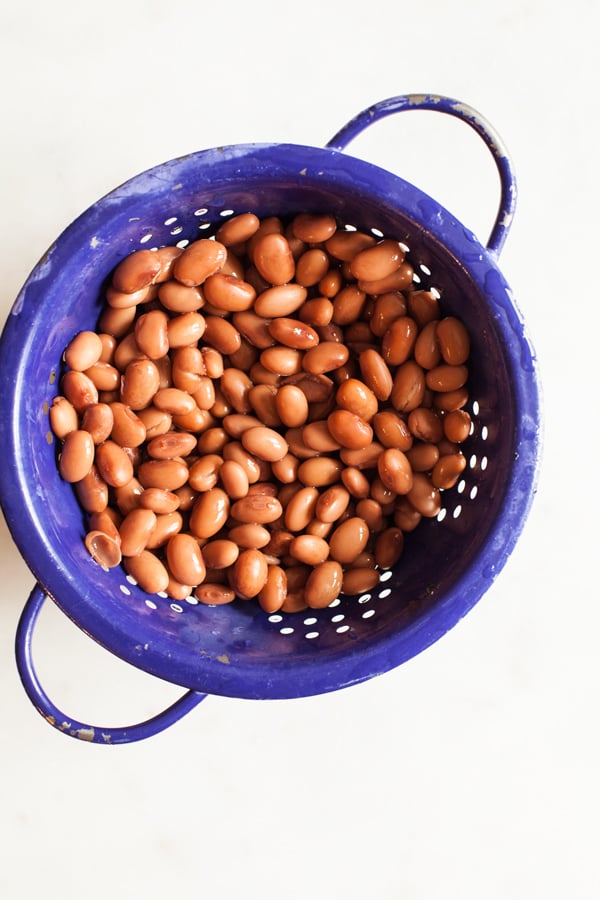

Pinto beans (5%) + collard greens (27%) = 32% RDA
Simmer the beans and greens in a simple soup or stew. Or, try combining these ingredients into an easy skillet dinner.


Dried figs (12%) + almonds (8%) = 20% RDA
You can enjoy these two as a snack, paired together on top of oatmeal or porridge, or processed into a homemade raw snack bar!
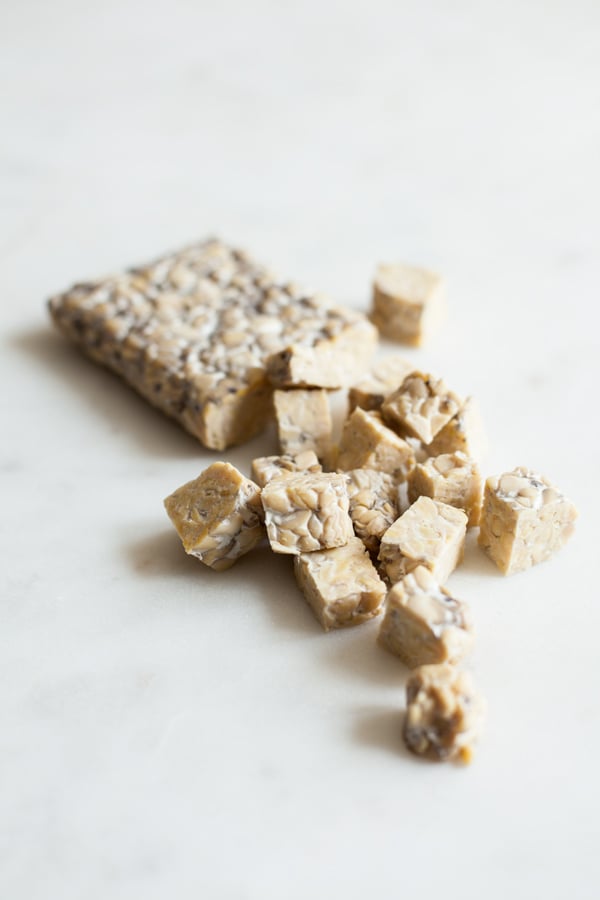
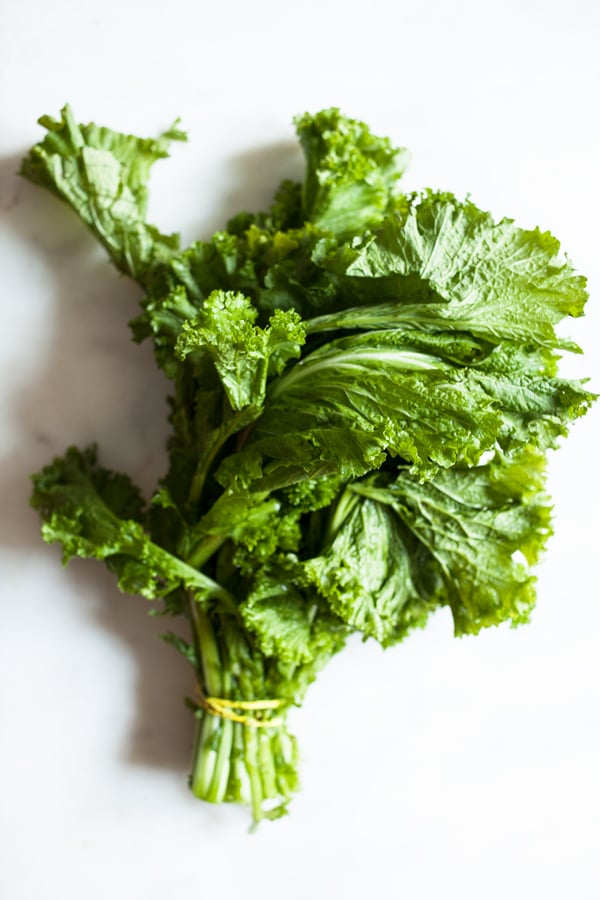
Tempeh (12%) + mustard greens (16%) = 28%
Combine these two in an easy skillet dinner and serve it over some brown rice. Or, make an open faced tempeh sandwich, top it with mustard greens, and smother it with some sort of delicious sauce.
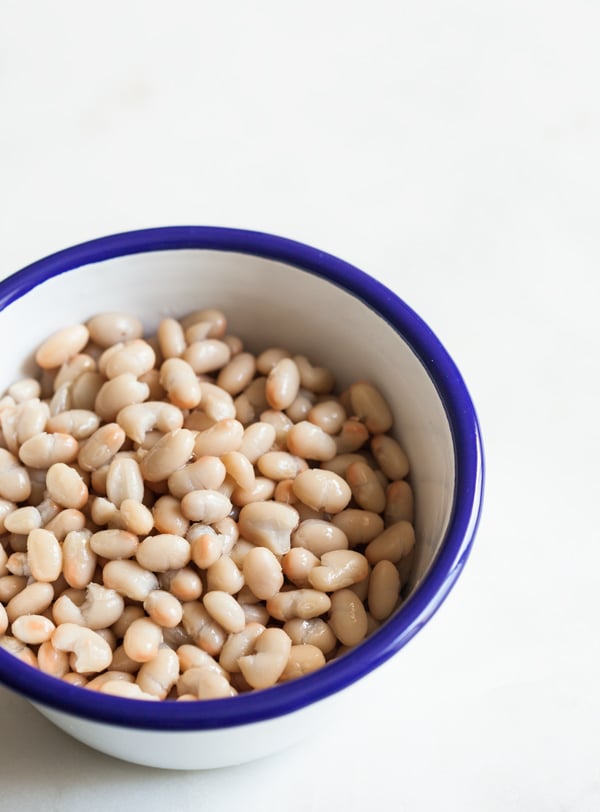
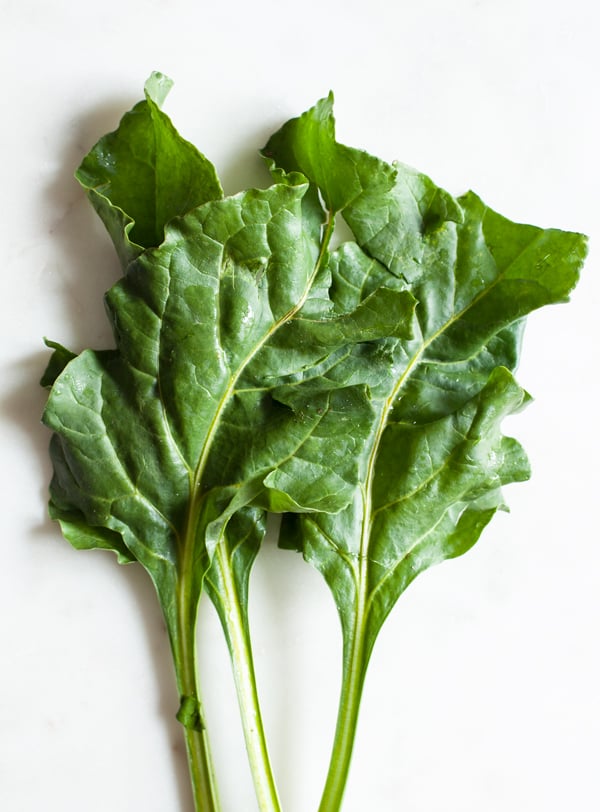
Navy beans (6.5%) + turnip greens (20%) = 26.5%
Create a soup with navy beans, greens, and garlicky broth. Or, try making a navy bean hummus, then using it to top a delicious green and grain bowl.
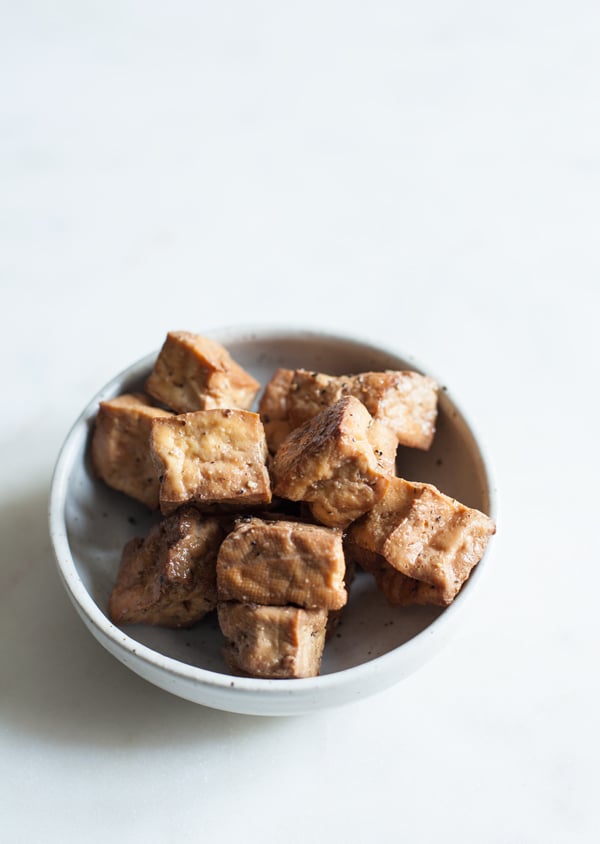
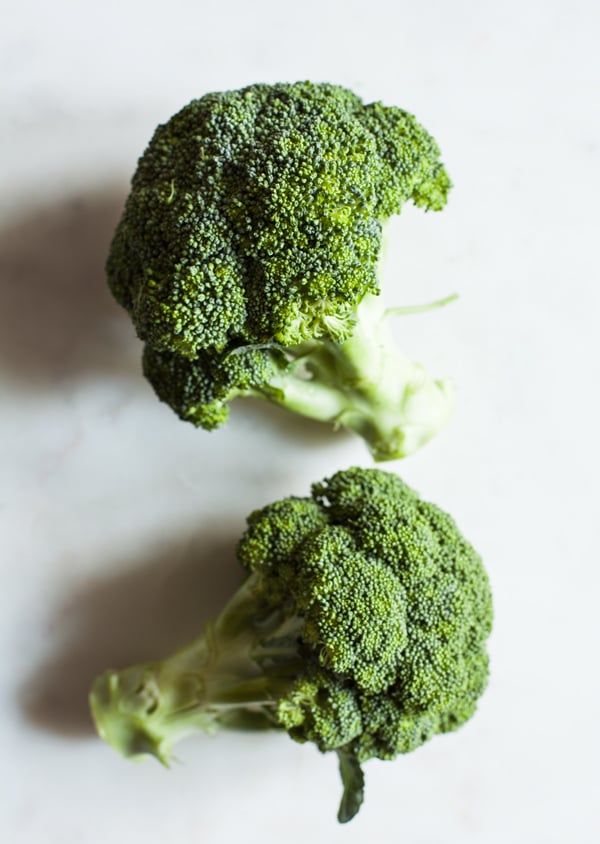
Tofu (15%) + broccoli (6%) = 21%
Make an easy dinner stir fry, create a bowl meal (sort of like this one), or create a tofu scramble with broccoli florets for breakfast.
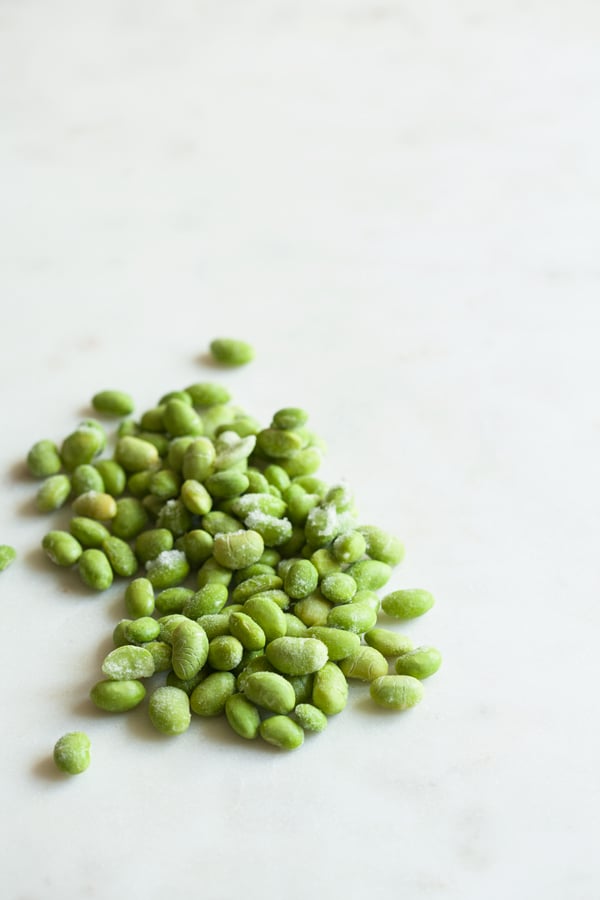
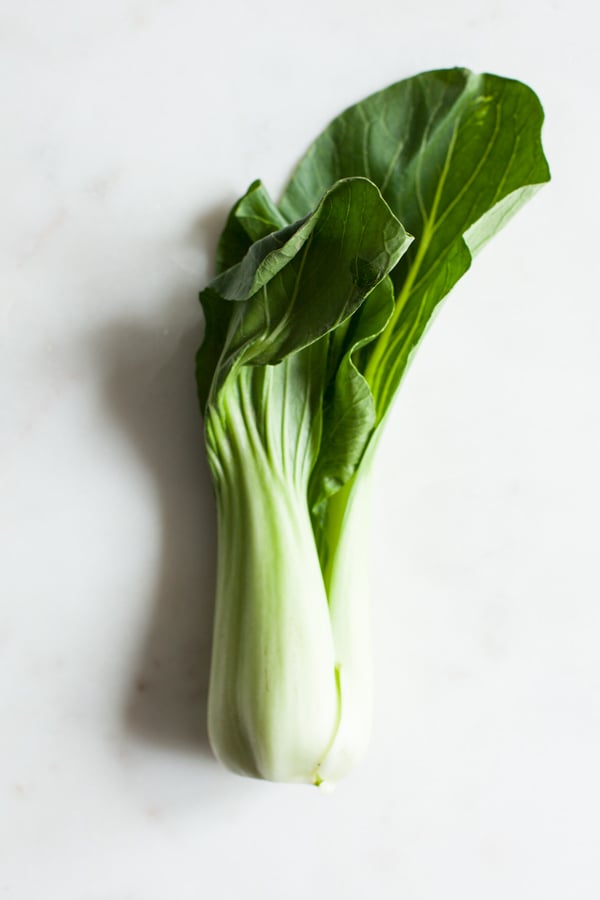
Edamame (10%) + bok choy (15%) = 25%
Make a nutritious soba noodle salad, featuring shelled edamame and chopped bok choy. Or, make a miso broth and load it up with greens and edamame.

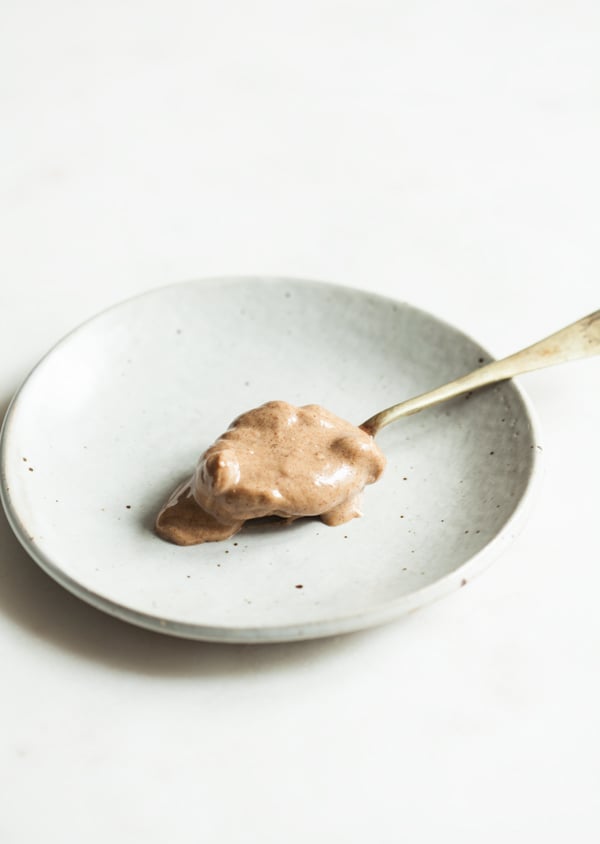
Fortified non-dairy milk (45%) + almond butter (8%) = 53%
Pair these together in a smoothie, or combine them in a bowl of creamy overnight oats.
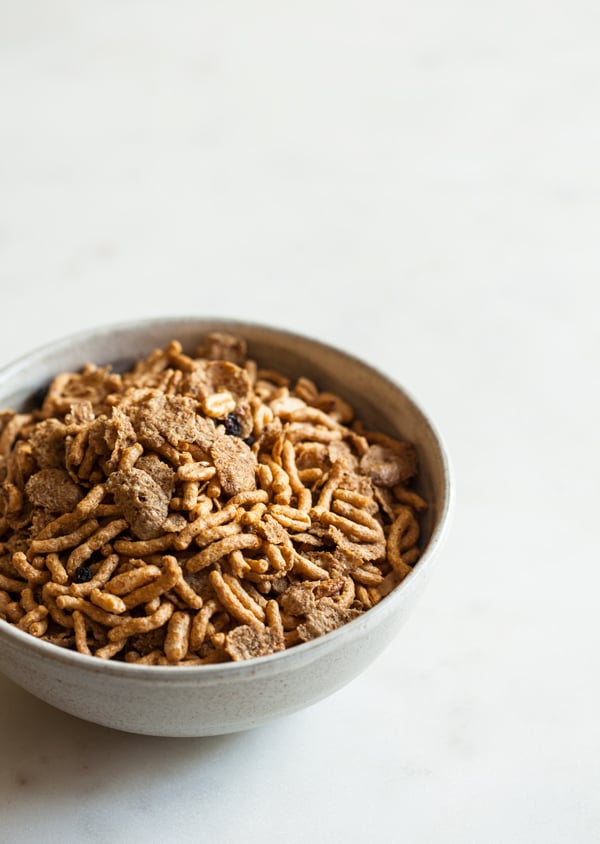

Fortified cereal (25%) + fortified non-dairy milk (45%) = 70%
A quick and easy breakfast!

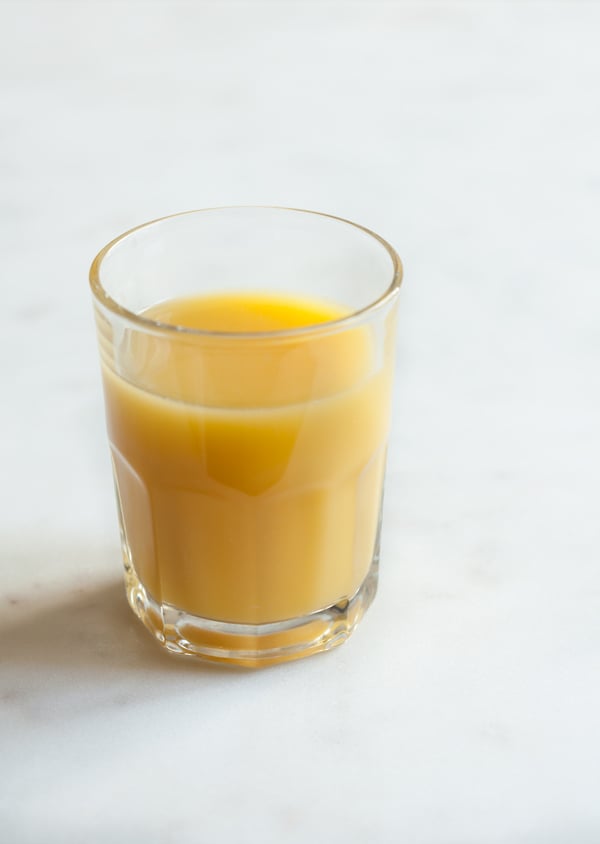
Tofu (15%) + fortified orange juice (35%) = 50%
Combine silken tofu and fortified orange juice in a smoothie or dressing. Or, try having a glass or half glass of fortified orange juice with a tofu scramble breakfast. (NB: whole fruits are a healthier choice than fruit juices, but if calcium acquisition in diet is proving to be a major challenge, the benefits of a glass of OJ might compensate for the fact that it’s less ideal than fresh fruit.)

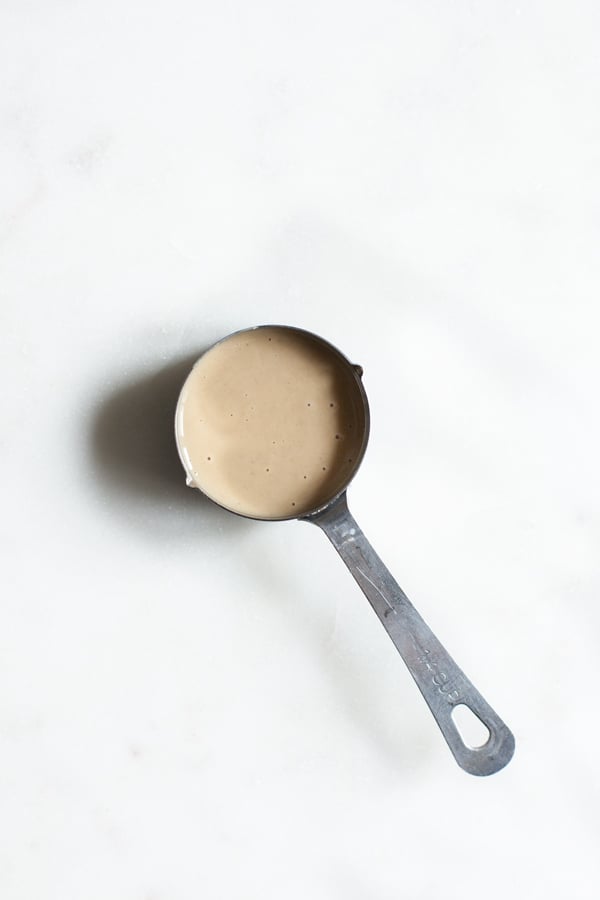
Greens (20%) + tahini (8%) = 28%
Make a big kale salad and smother it in tahini dressing. Or, try making a green and grain skillet dish, then topping it with homemade tahini sauce. Not inspired yet? Then simply combine these two in bowls, bowls, and more bowls.


Tempeh (12%) + tahini (12%) = 24%
To start, you can make a super tasty lunch sandwich with tempeh bacon and tahini sauce. Or you can whip up a tempeh breakfast scramble with tahini drizzle. If all else fails, try a batch of tempeh lunch salad with tahini in the sauce.


Almond butter (8%) + edamame (10%) + broccoli (6%) = 24%
Create an edamame and broccoli stir fry, then top it all with a rich almond butter sauce. Or, try throwing together a fresh broccoli and edamame salad, then savor it along with some almond butter and toast.


Tofu (15%) + almond butter (8%) + orange slices (7%) = 30%
Enjoy a tofu scramble with a creamy almond butter sauce, and serve it for breakfast with a cup of orange slices. Or, make an almond butter and orange dressing, then serve it over a tofu salad or stir fry. If all else fails, make a simple morning smoothie with silken tofu, almond butter, fresh orange slices, and fortified non-dairy milk.


Dried Figs (12%) + Tahini (12%) = 24%
Figs and tahini can be combined in a super creamy and delicious smoothie (perhaps with some banana and non-dairy milk).


Kale (10%) + Almonds (8%) + Edamame (10%) = 28%
You can make a batch of kale and almond pesto, then serve it over pasta, rice, or another grain dish studded with edamame (or stick some edamame in the pesto itself!). You can also make a grilled or raw kale salad and top it with edamame and crushed almonds. Or, try making a kale and edamame stir fry with rice or soba noodles, and then sprinkling it with chopped tamari almonds.
Of course, there are many other ways to enjoy calcium rich plant foods—these are just a few of my favorite suggestions. On Thursday, I’ll be sharing a very simple green and legume dish that provides over 30% of your RDA of calcium in one single serving.
Putting it All Together
Even if you know have a strong sense of vegan calcium sources and how to cook with them, it can be helpful to keep a couple of general tips and considerations—including factors that influence absorption—in mind. Here are a few general guidelines to help you protect your bones through diet and lifestyle.
Eat a wide array of dark, leafy greens and cruciferous vegetables.
This one doesn’t need much explanation!
Consider fortified, non-dairy milk as a regular calcium source.
I love making homemade almond milk (and other nut milks). But these creamy blends don’t deliver a calcium content that’s in any way comparable to what one gets from a cup of fortified, non-dairy milk. I recommend saving homemade nut milk as a treat (something to warm up and sip after dinner or with tea), and using fortified milks for everyday use, such as morning cereal or porridge, smoothies, and so on.
It’s also worth noting that not all non-dairy milk is fortified with a significant amount of calcium; some brands contain only about 10%.
It’s ideal to aim for a brand that contains 35-45% of the RDA. Soy milk is my go-to, and the brands I buy most often are Silk, Westsoy Organic, and Edensoy.
For almond milk, I’m a fan of Califia Farms and Silk. For oat milk, Oatly is my favorite by far.
The same goes for tofu: if you can find a brand that’s calcium-set, it’s probably a better nutritional investment than one that isn’t.
Think about absorption.
Various factors can influence how much calcium we actually absorb from the foods we eat. Spinach and Swiss chard contain some calcium, but they’re also high in oxalates, which means that the calcium won’t be readily absorbed. Caffeine may have a small impact on calcium absorption, but research suggests that, if a person is consuming enough calcium overall, the effects are likely to be negligible [15].
Vitamin K, which can be obtained through leafy greens like spinach, parsley, kale, and broccoli, also plays a role in maintaining healthy bones [16], though research doesn’t suggest that supplementation isn’t necessary (at least not for bone health).
Eat a varied, balanced diet.
As important as calcium and Vitamin D are, they’re not the whole story when it comes to bone health. Evidence suggests that antioxidant-rich foods can help to protect the bone matrix, which is great news for vegans, since varied plant-based diets tend to be very rich in phytonutrients. Protein also has a protective effect, so it’s a wise idea to make sure that your diet contains plenty of legumes and protein-rich foods. One study of plant-based eaters suggested that merely one serving of meat replacements daily, as well as higher consumption of legumes, offered significant protection for bones [17]. If you’d like some tips on protein-rich food combos, you can revisit this post.
Bone protection goes beyond diet alone.
Weight bearing exercise and activities that strengthen balance are an important part of keeping bones strong and protecting us against falls and accidents as we age. Stay active, and try to vary your physical movement in a way that allows you to focus both on strength and on balance through high- and low-impact exercise.
Learning More
If you’d like to read more about veganism and bone health, there are a ton of great resources from RDs right here on the web.
Start by reading Ginny Messina’s vegan calcium primer, then check out her posts on vegan diets for healthy bones (which includes good information on absorption) and her post on protein and bone health, which helps to clarify the acid/alkaline hypothesis and its resulting confusion.
Jack Norris has a very comprehensive post on calcium and Vitamin D in vegan diets on his website.
Finally, Reed Mangels has a great article on calcium in the vegan diet available at the Vegetarian Resource Group’s website.
These links all feature citations that will allow you to do further research on your own, if you wish to.
Nutrient acquisition can feel complicated when you start to consider all of the nuts and bolts. But hopefully this post can help to make the sourcing of calcium in your plant-based diet feel simple and realistic.
If you enjoyed this post and you’d like to see more like it, please let me know! I’d love to hear what nutrition topics or nutrient considerations are on your minds. And I can’t wait to circle back on Thursday with an easy, delicious, and calcium-rich recipe 🙂
xo
1. Reinagel, M. Osteoporosis prevention through the lifespan: challenges and opportunities to build or maintain strong bones. Food & Nutrition Magazine. 2016, May/June: 16-17.
2. Väänänen, HK, and Härkönen, PL. Estrogen and bone metabolism. Maturitas 1996 May; 23 Suppl: S65-9.
3. Riggs, BL. The mechanisms of estrogen regulation of bone resorption. J Clin Invest 2000 Nov 15; 106 (10): 1203–1204.
4. Weaver, CM, Gordon, CM, Janz, KF, Kalkwarf, HJ, Lappe, JM, Lewis, R, O’Karma, M, Wallace, TC, Zemel, BS.The National Osteoporosis Foundation’s position statement on peak bone mass development and lifestyle factors: a systematic review and implementation recommendations. Osteoporos Int 2016 Apr;27(4):1281-386.
5. Weaver CM, Plawecki KL. Dietary calcium: adequacy of a vegetarian diet. Am J Clin Nutr 1994; 59:1238S-1241S.
6. Appleby P1, Roddam A, Allen N, Key T. Comparative fracture risk in vegetarians and nonvegetarians in EPIC-Oxford. Eur J Clin Nutr 2007 Dec;61(12):1400-6.
7. Thorpe, DL, Knutsen, SF, Beeson, WL, Rajaram, S, Fraser, GE. Effects of meat consumption and vegetarian diet on risk of wrist fracture over 25 years in a cohort of peri- and postmenopausal women. Public Health Nutr 2008;11:564–72.
8. Mangels, R. Bone nutrients for vegetarians. Am J Clin Nutr 2014 100: 469S-475S
9. Fenton, TR, Lyon, AW, Eliasziw, M, Tough, SC, Hanley, DA. Meta-analysis of the effect of the acid-ash hypothesis of osteoporosis on calcium balance. J Bone Miner Res 2009;24:1835–40.
10. Munger RG, Cerhan JR, Chiu BC. Prospective study of dietary protein intake and risk of hip fracture in postmenopausal women. Am J Clin Nutr 1999;69:147-52.
11. Promislow JH, Goodman-Gruen D, Slymen DJ, Barrett-Connor E. Protein consumption and bone mineral density in the elderly : the Rancho Bernardo Study. Am J Epidemiol 2002;155:636-44.
12. Devine A, Dick IM, Islam AF, Dhaliwal SS, Prince RL. Protein consumption is an important predictor of lower limb bone mass in elderly women. Am J Clin Nutr 2005; 81:1423-8.
13. Hannan MT, Tucker, KL, Dawson-Hughes B, Cupples LA, Felson DT, Kiel DP. Effect of Dietary Protein on Bone Loss in Elderly Men and Women: The Framingham Osteoporosis Study. Journal of Bone and Mineral Research. 2000; (15)12:2504-2512.
14. Institute of Medicine. Dietary Reference Intakes for Calcium and Vitamin D. 2011. Washington, DC: The National Academies Press.
15. Rafferty, K, Heaney, RP. Nutrient effects on the calcium economy: emphasizing the potassium controversy. J Nutr. 2008 Jan;138(1):166S-171S.
16. Weber, P. Vitamin K and bone health. Nutrition. 2001 Oct;17(10):880-7.
17. Lousuebsakul-Matthews V, Thorpe DL, Knutsen R, Beeson WL, Fraser GE, Knutsen SF. Legumes and meat analogues consumption are associated with hip fracture risk independently of meat intake among Caucasian men and women: the Adventist Health Study-2. Public Health Nutr. 2013 Oct 8:1-11.
This post may contain affiliate links. If you use these links to buy something I may earn a commission. Visit my privacy policy to learn more.

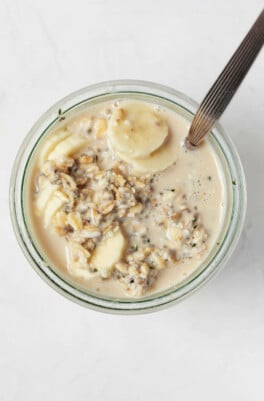
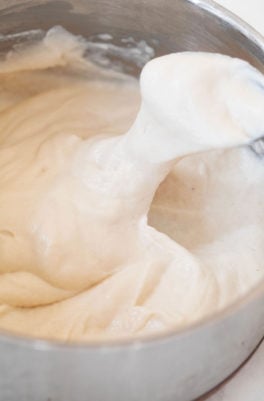
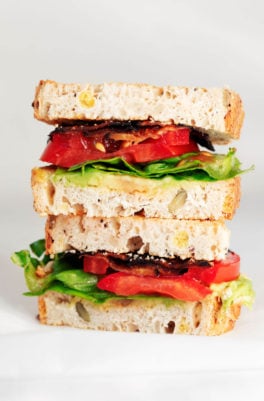
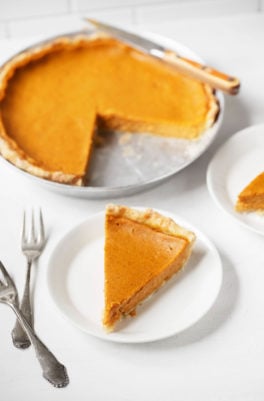
Leave a Comment
Thank you for this
Excellent and Very Helpful Article..
I wish to get shared details of calcium rich and vitamin D3 rich vegetarian food available for person from a middle class family
What a great post! I’m always concerned about getting enough calcium. I’m 64 and a small boned woman with a vegan diet. Going to make collards and beans tonight! I have collards in the garden and beans in the freezer. Thanks for these combos.
This is incredible! I love this post so much. The way you’ve laid it out, both graphically and informationally, works perfectly for my brain. I am so grateful! As a pregnant person I am thinking about nutrition in a much less lackadaisical way than ever before. I wish you had a post like this about protein, broken down the same way. I am supposed to be getting 75+ grams a day and have no idea if I’m making it.
Your article is the best I’ve found on the topic of calcium for vegans–thank you! I would love to have a quick breakfast sometimes of fortified cereal and non-dairy milk, but the fortified cereals I’ve looked for are usually commercial cereals that are high in sugar and gmo. Can you recommend fortified cereals that are more healthy?
thanks for your bravery in sharing your experiences to help others– if only more were willing to take something personal and likely painful and turn it into something beautiful from which we can all benefit.
wishing you all the best, and look forward to following!
this is the most informative post I’ve ever read. Thank you for taking the time to put it together. I look forward to more.
This is a wonderful article. I’m vegan and have been told recently that i have osteoporosis so this really cheered me up because it makes me feel like getting enough calcium is actually achievable. Thank you!
You should give people a more in-depth source of info, didn’t mention how Oranges are 5%, kiwis as well, perhaps consider including less supplemented foods and more naturally occurring sources of calcium – Great source of info nonetheless.
Great piece on calcium , I’m just transitioning to vegan after 15 years as a vegetarian and your posts are a great help. I especially like your practical way of relating the numbers and measurements to foods and portion sizes. Thank you! New subscriber .
Thanks, Victoria!
Hi!
I never know how to to with calcium… for example, kale is rich in iron and calcium. If I use an acid, like lemon juice, the iron will be absorved, if not, the calcium will be prioritized.
So, if I’m travelling and in a place without fortified foods, I don’t know what to do to compensate the calcium due to the absortion competition game they play.
Do you have any advice?
Thank you
Great article, though I have a question regarding inaccessibility of fortified foods. We live overseas and can’t purchase non dairy mills that are fortified so we use a soy milk machine and make homemade soy milk and almond milk in there. We do eat the locally made tofu though I’m sure it isn’t fortified as it’s purchased fresh and warm cut off a large block made in the morning. We can get nuts, kale, bokchoy, broccoli, beans, tahini and other foods on your list but no fortified cereals are available. I have to make our granola from scratch and we eat homemade bread and oatmeal or vegan muffins. What else can we do or are supplements useful in this case?
This is so helpful and I love the pics of helpful combinations. Thank you.
Echoing the comments ahead of mine – thank you so much for the wonderfully thorough informative post! I will reference this often & am glad to have found your blog!
This is amazing! I love how comprehensive it is and I really appreciate the sources and suggestions for further reading. This makes my researcher heart happy! Iron is another concern for me as a vegan. I would read anything you write.
This post was very helpful to me. Thank you
Hi Gena. I have been eating mostly plant based (80%) for about 8 months now with decreasing meat last 3 months and now 100% vegetarian with minimal eggs and diary. Any good books tp get a good overall idea of things? I have read articles but wondering any starter books you think might be good for an overall perspective? Thanks
Hi Gena,
Thank you for this extremely informative and helpful blog. I am a fitness professional who specializes in working with women over 50 and with pre/postnatal women, so calcium is a huge focus for both demographics. I am also vegan myself and always looking for good information for my own health too!
The question I’ve been having for some time is why calcium fortification is good, while the supplements may not be so good. What is difference between the calcium used to fortify foods vs. the supplements? I typically avoid foods that are supplemented because I have assumed that they are the same as taking a supplement but in your blog you strongly encourage fortified foods while suggesting that supplements are more like a last resort. I admit that it is very difficult to hit the full recommendation without fortified foods so I am especially interested in your thoughts on this.
Thank you,
Morgana
Great list! Magnesium also plays an important role in the absorption of Calcium (along with Vitamin D) though it’s tough to the balance just right.
Thanks for sharing!
How fabulous to have found you!
I’ve just been diagnosed with Osteopenia in my spine.
I have suffered with an eating disorder twice in my life and I am very fit and active now but have an intolerance to dairy and the mustard mix family of vegetables which is basically all the calcium rich veggies required for bone health so am a loss as to how to help myself but now I have discovered this site I feel such relief!
Cannot wait to go shopping tomorrow!
Thank you.
Louise, I’m so glad that the post is giving you some guidance and comfort. I’m sure you’ll be able to care for and protect your bones—you seem to have a lot of determination and awareness!
and poppy seeds 😉
Where do I find juice fortified with VEGAN calcium?
It’s usually animal derived.
My understanding is that it’s usually the Vit D that is animal-derived, in which case this post is helpful: http://www.vrg.org/blog/2011/08/17/calcium-fortified-orange-juice-without-vitamin-d/
I could be mistaken, though, and I’ll certainly do more research!
If calcium supplements are not recommended are fortified foods not then the same i.e.not from food? Or are fortified foods and calcium from greens the same?
Fortified foods have lower levels and it’s thought that they may be better assimilated than non-food supplements — but a great question! And a combination of fortified food and calcium-rich whole food is definitely ideal.
This post is fantastic. I share other appreciation for the time you have taken. I am a vegan who was just told they are low in calcium by their doctor and need this information! You are a fantastic writer and so very genuine and generous. Best wishes.
Hi Gena!
I just had a thought the other evening- since it is recommended that iron and calcium supplements should not be taken at the same time, due to absorption issues/interactions between the two, would this apply to food as well? I’ve been having iron-rich cereal in the morning, with fortified almond milk & was wondering if the two cancelled each other out.
Thanks!
Only just finally caught up on this thanks to you linking back to it on the weekend. I totally echo what others have said about how great these posts are – both comprehensive and accessible, empowering without being overwhelming. I can’t get a bone scan on the NHS until I’ve had a period for 3 months but i had osteopenia a few years ago. One of those things where i eat some greens and tahini and assume I’m “fine” but this has forced me to look seriously at the numbers and up my game. Thanks honey xxx
SUCH A helpful post! I love how you do these nutrient roundups … they’re so easy to understand and a ridiculously useful reference.
One thing I’ve started doing (although I didn’t know it was calcium-rich) is putting tahini on toast in place of butter, avocado, etc. I like it better than hummus in the am (for some reason hummus is too strong most mornings) and now I know it’s extra health benefits!
Thanks for this very helpful post. At 50 I look back on all of the soda that I drank in my childhood and 20s and worry about my bone health. There is so much confusion about how much calcium is needed in a vegan diet. I always feel like I am getting the truth about nutrition from your posts and not just hearing that a vegan diet will cure all.
Robin, I think we all have some regrets when it comes to ways in which we could have protected bones better in our teens and 20s! Unfortunately young women and teens are often the most prone to skimping on calcium, or to engage in behaviors that put bone health in jeopardy later on. But I do take such comfort in the fact that one can work to protect the bones at any point. So glad you enjoyed the post.
Wow – what an incredible post. Thank you. I am so pleased with the way you present the information. You provide it in a simple, yet intelligent way – not talking down to us but providing useful information that can be absorbed in a variety of ways; from the numbers and the science, then breaking it down into a usable resource with the food suggestions. The time and effort you put into this post, and hopefully more to come, is much appreciated.
Question – what does roasting due to the calcium levels – for example roasting almonds, making kale chips or roasting broccoli or even raw vs roasted tahini? Also does cooking, whether it be roasting, sautéing or steaming, the veggies have an effect on absorption? (if this info can be found in the links provided – please feel free to just direct me there – in the mean time I’ll be checking them out)
You asked for suggestion on topics – what about omega’s, iodine or fiber?
Thanks again and enjoy the day!
Maureen, posts like this are a pleasure to write because I find them very helpful myself! I always find it easier to examine nutritional questions and goals through real food and meals, even if knowing the facts and figures is also very useful.
To answer your question about cooking processes, the information I’ve seen isn’t exactly conclusive, and I don’t myself have a clear picture on every type of cooking method. For instance, I’m not sure about the effect of roasting on nuts and seeds. As far as cooking greens and crucifers goes, I think it can be beneficial in two ways:
1. It can lower the oxalate content of vegetables that do have oxalates, like spinach or chard, making what calcium is present in the meal easier for the body to absorb–though we’re not really sure the extent to which this happens or how much it matters in a big picture way
2. Steaming or boiling greens can reduce their volume, making it easier to eat a bigger portion (so, there’s a lot more kale–and all of the good stuff in kale–in a cup of steamed kale than there is in a cup of raw kale)
This isn’t to say that kale salads and raw dishes aren’t still healthful and a good potential source of calcium and other nutrients. It’s just something to keep in mind. As someone who in the past relied almost entirely on salad for my leafy green consumption, I try nowadays to have more variety, and I use varied cooking methods.
I’m sure Ginny has more information on cooking methods on her site. Hope this helps!
Same question about milk – I cant stand it cold:) Does heating it up in the microwave with cereal kill the calcium? And what about adding it to pancakes (& frying) – I’m sure that removes all the nutrition…What you think?
A lot of fortified cereals (General Mills that I know of) contain vitamin D3 which is primarily derived from sheep skin. Portabello mushrooms have a lot of vitamin D. Perhaps other mushrooms do too.
Thank you, that was so interesting and informative!
Thanks, Lindsay!
As a medical student I thought this article was really well writen! It is factually correct and you’ve given goos reference so people can find out more! It is a very well balanced post which tells us that as vegans, there is an increased risk of future osteoporosis but if we keep an eye on our diet then we can manage that risk!
Brill!
This was a great post! My grandmother has osteoporosis so calcium is a nutrient that has always been on my mind even as a little girl. Also for my mom, she recently had a health scare with melanoma (it didn’t spread thankfully so they were able to cut it all out) and she has very pale skin so she hides from the sun most of the time. Since you need vitamin D for good bone health she is always extra worried about this.
This was really well done!!!
Thanks, Tracey!
Thank you so much for this post! I’ve been eating a plant-based diet for more than a year and this is a really tricky area for me. I take a multivitamin and drink fortified soy milk so, hopefully, I should be covered. But this post and the previous one concerning your vegan client who had this issue were extremely helpful.
So glad that you found these posts helpful, Natasha. For what it’s worth, I find calcium to be tricky, too (even though I work hard at it). This post was a reminder for me, too, that it can be simple!
I can’t tell you how much I appreciate the time and effort you put into writing such a comprehensive, informative post. I was recently at the doctors, and we had a conversation about my calcium and Vitamin D intake, as a vegan. My doctor said I should be looking into ways to get more calcium from my diet. So it was really fortuitous that I came across this post as a resource. Thank you Gena!!
Sarah, I am so glad that you find the post informative! It can be tough to match the intention to eat more calcium rich food with the everyday cooking process, and it was my goal to help make it a little easier. Glad you’re looking after calcium and D in your diet!
I think this is something everyone should keep in mind as we begin to age, or consider childbirth. Great guide to getting one’s health on the right track!
Thanks, Ksenia!
This is one of the most wonderful vegan posts ever! It should earn a blogger award if that exists. Thank you for being so thoughtful and thorough and and presenting information in an easily absorbable manner. (See what I did there? Hehe.) This is a great, scientifically-based resource. I appreciate all the time you took to put this together.
The only thing that would make this better is a printable calcium cheat sheet with the sources and a few combos listed that one could print and tape to their fridge for easy reference. Or am I the only one who does stuff like that? Haha.
Jaclyn, thank you so much for the kind words! I’m going to mull over the idea of a cheat sheet 🙂
a “cheat sheet” would be great! something I can take to the market with me would be handier than recipes. Thank you for a great article; I read quite a few after a google search, and this is the best for me.
This is great- thanks! I hadn’t really paid much attention to calcium in my diet, until I tracked a couple of days last week and realised if I wasn’t actively choosing calcium rich foods then I was way, way off RDA, I have brought back fortified milks into my diet and am making sure to include some of the above options daily. What are your thoughts on hard water being a source of calcium? Here in London we have very hard water, and I read somewhere that we can take in up to 200mg a day from that.
Hi Lauren!
My understanding is that hard water can provide about 80-120 mg calcium per serving, but that it’s not always a reliable source (levels of calcium in water might shift). You might factor it in somewhat, but I would still pay attention to diet first and foremost.
G
Excellent post, Gena–there’s a lot to absorb here–haha–and I will go over it again, and return to it as needed. I love your calcium rich food combos. It was nice to see I already have got some of those going on pretty much on a regular basis. And oranges–I didn’t know that–cool! And yes, do more like this. 🙂 xo
Wow, what a fabulous, comprehensive post, Gena. I liked your simple meal suggestions at the bottom and so happy to see you recommended weight beating exercises as well. Keep up with awesome posts like these. 🙂